IoT for Smart Banking and Finance
In recent years, the use of the Internet of Things or IoT and the network of interconnected smart devices has increased dramatically among different industries as well as among households. Whether it be the healthcare sector, automotive, real estate, agriculture, manufacturing, insurance, or retail, everyone depends on IoT to manage and facilitate their business activities. Being a category with massive amounts of data to leverage, the finance and banking sector can improve their services by taking advantage of the IoT. In this article, we’re going to discuss how IoT can be beneficial in smart banking and finance.
What is IoT in Banking?
IoT refers to the interconnected network of smart devices that can gather, transmit, and enable data to be processed in a cloud or an in-house server. In the finance sector, this enhances the banking experience for both the parties, the customers, and as well as the businesses. Here are a few of the major advantages of using IoT-enabled infrastructure in banking and finance:
-
Security
IoT can help banks improve their security at physical branches by using Smart CCTV cameras with round-the-clock monitoring, Smart Alarm systems, and other security-focused technologies. These devices can be connected and operated remotely. With the possibility of real-time updates and notifications, in case of intrusion or security breaches, the team can lock up the branch quickly or take other appropriate measures.
-
Real-time Monitoring
IoT devices can gather real-time data from the banking ecosystem in terms of transaction data, customer records, etc. This data enables banks to assess customers’ needs at any place or time and to facilitate appropriate services. Leveraging real-time data also allows banks to provide data-accurate services. For instance, banks and NBFCs can now send notifications to their customers about their account balances running low.
-
Fraud Detection
IoT can help in detecting and minimize fraud in online banking applications by sending notifications every time a transaction is made. This makes the customer aware of each transaction and gives them time to instantly flag a purchase as fraudulent if they don’t recognize it. It also helps the backend system record this information and detects fraudulent activity early.
-
Improved Analytics
IoT helps banks and NBFCs to accurately estimate their ROI by providing up-to-date information regarding the projects or individuals they are investing in. Let’s look at a few examples to understand this better.
- In real estate, IoT can extract data from street cameras and satellites to track the level of socio-economic activity in the vicinity.
- Knowing the consumer’s spending history is necessary for consumer loans. This is done by extracting data from various IoT-enabled applications and sensors.
- In the case of securities, IoT can be used to determine the amount of trading executed through government bonds as opposed to privately-issued bonds. This is done by leveraging data from various IoT-enabled analytics platforms.
-
Better Customer Service
Extracting data from websites, mobile applications, or any other domain where a transaction was made allows the banks and NBFCs to personalize their services for the customer. This includes personalized money management suggestions and budget plans, which is often quite beneficial as it makes the customers more invested in the bank and its services.
-
Expanded Services
Banks nowadays don’t only manage money or assets. With the help of IoT, they are now able to leverage data from customers’ smart wearables such as smartwatches to keep track of their fitness levels. The customers are then rewarded with cash-backs or lower APRs according to their fitness and daily routines.
-
Cardless Transactions
In order to improve the customer experience and facilitate transactions as much as possible, mobile banking applications now link the customers’ credit and debit cards, allowing them to make wireless payments by their phones alone at any place or at any time. There are also IoT-enabled tags that leverage the concept of NFCs provided as wireless payment options to customers by banks and NBFCs.
IoT Applications for Smarter Banking and Finance
Here are a few use cases that make IoT crucial for new-generation smart finance and banking:
-
Smart Branch
IoT solutions for smart branches optimize customer experience by monitoring queues and informing customers of their waiting time or directing them to a free counter. Smart branches can share user data to improve workflows and minimize staff involvement. The branch, with the help of IoT, can also use facial detection to monitor how customers interact with the space in real time.
-
ATMs
Data flow facilitated by IoT assists banks in tracking client activity, defining ATM usage trends, and making demand-based ATM placement decisions. IoT solutions help manage problems such as using skimming devices, card reader malfunctions, cash shortages, and so on by ensuring real-time monitoring of ATM operations and cash levels. IoT can also drive enhanced credit card experience regarding ATM usage.
-
Trade Finance
For banks involved in trade financing, IoT ensures the visibility of physical flows they are financing and enables decision-making based on real-time information possible. IoT-generated data helps banks better assess the risks throughout the trade life cycle, allocate funds more efficiently, and scale up finance strategies.
-
Insurance
Insurers use IoT-generated data to avoid and anticipate mishaps. IoT devices monitor the condition of insured assets and alert insurers of any irregularities, enabling them to act and take the necessary steps to reduce risks. An insurer, for example, can detect an asset failure and notify the policyholder before the asset is harmed.
This strategy aids in the reduction of insurance claims and the prevention of insurance fraud. For instance, insurers may deliver customized insurance coverage by collecting car condition and driver behavior data using IoT and telematics. Such devices can also send individual driving data to insurance companies, and reduced insurance prices encourage safe driving.
-
Accounting and Audit
Accountants may track financial data in real-time and obtain accurate insights into a company’s operations by utilizing IoT to perform the advisory job more quickly. IoT-enabled communication of the client’s payment systems and the CPAs’ software ensures quick and secure data exchange and facilitates the automation of routine bookkeeping processes such as data entry, reconciliation, invoicing, etc. IoT also makes a difference in auditing by boosting transparency and automation: CPAs can monitor transactions and control audit trails on the fly to quickly reveal data inconsistencies and prevent fraud.
What are the Challenges of IoT in Banking?
While IoT can help banks and financial institutions in a myriad of ways, the biggest challenge for IoT in banking and finance pertains to the security of the banks and their client’s data. A few of these downsides are discussed below:
-
Data Breaches
To utilize the most advantage of IoT, most banks are partnered with big tech firms such as Google, Apple, Samsung, and Amazon. But if a data breach were to take place at any of those companies, it would compromise the banks’ and their customers’ data privacy. In this regard, such cyber-attacks and hacks can lead to the access of transaction data, and financial information such as credit card numbers, if a data breach takes place.
-
Data Exploitation
The exploitation of data can be quite a challenging issue for the customers of banks and financial institutions. Despite providing personalized features and services to customers, banks might not always reward your fitness endeavors with cashback or offers. Instead, there might be instances when that data is used against you. The next time you apply for a loan, they could use your health status as an excuse to increase your rates based on a non-existent correlation.
-
Vulnerable Mobile Apps
The mobile applications of banks are not always rightly encrypted and secure leaving them vulnerable to cyberattacks and hacks. If they are not appropriately maintained with time-to-time updates, hackers can infiltrate the system, wiping out thousands of customers’ life savings. Or even if their applications are secure, customers’ phones, for instance, might not be. This again provides infiltrators with an access point through which data can be compromised.
Conclusion
The necessity for digital transformation in the Banking and Financial sector is increasing daily. The Internet of Things or IoT is one such technology that helps innovate this sector. It has made customer management and corporate automation quick and efficient. It has also made inter-device communication a reality. Businesses in the finance sector can now use real-time data for accurate insights and higher security as well. Moreover, it has revolutionized transactions and made them more effortless than ever. IoT has immense potential in the Banking and Finance sector and is one of the most pivotal technologies to make banking and finance future ready. To know more about the use of IoT for businesses in the sector, connect with a high-end IT consulting firm such as Focaloid Technologies today.

